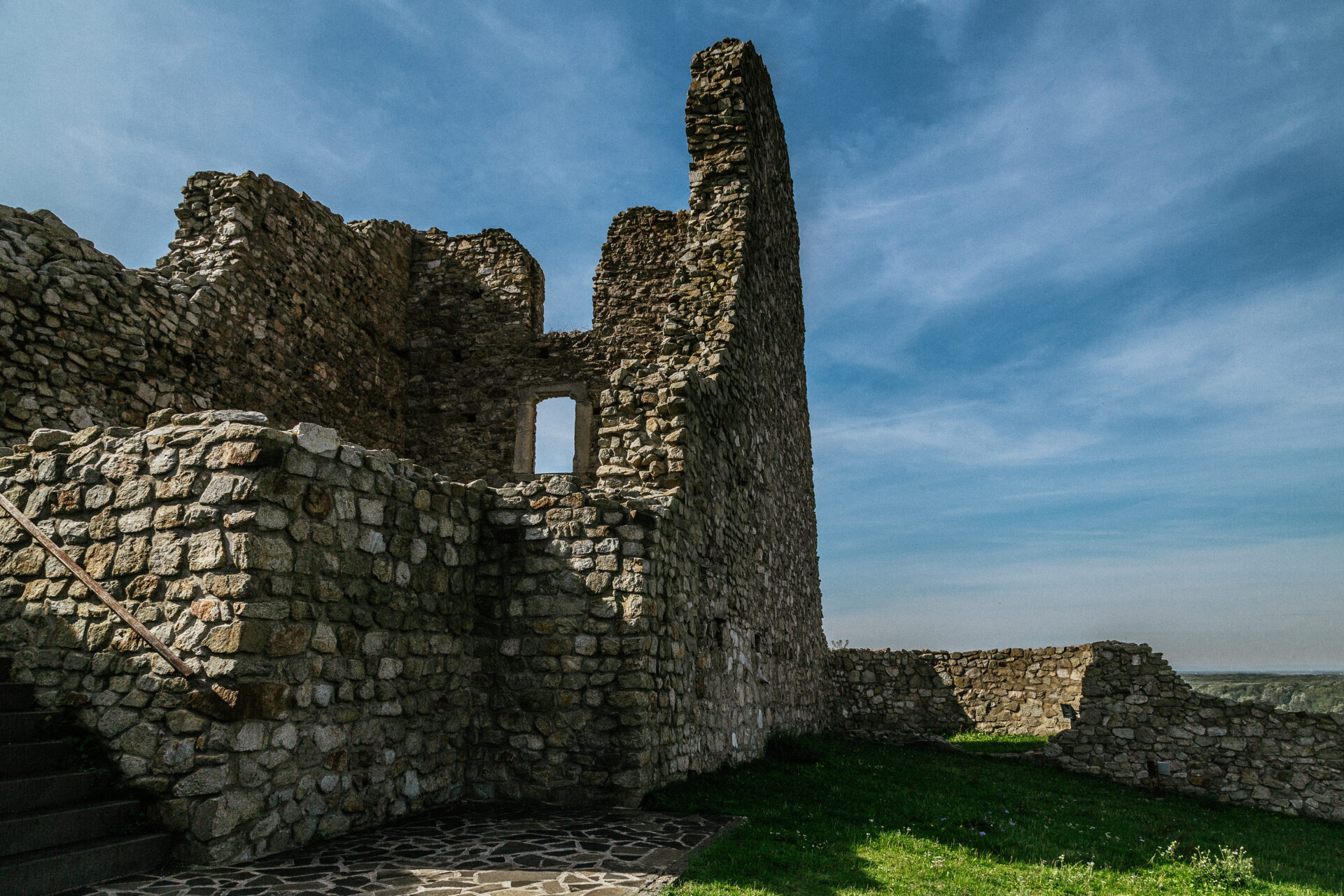Despite its relatively small area (circa 500 x 280 metres), the Devín Castle hill has surprisingly rich geological composition demonstrated in a variety of stones used by the constructors in various periods for building the walls and defence, residential, and farm buildings.
The Permian sediments preserved in Devín cannot be found anywhere else in the southern part of the Little Carpathians except for the Devín Castle hill.
The karst phenomena in the castle rock including 12 larger karst cracks are dated back to the Badenian period, i.e., 15 million years ago; at the same time, the most southern Slovak caverns with the lowest height above sea level are located here.
The oldest rocks can be found in the southern and east-southern parts of the castle hill. There are phyllites emerging in the steep slopes from the eastern gate up to the last houses in Slovanské nábrežie at the Danube River. Schists of the Palaeozoic with the dark grey/greenish colour are found here; the eroded parts have rusty patina. They were formed by transformation of the original sedimented clay/sandy rocks with the estimated age of 360 to 380 million years. As we can see on the illustrations and historical photographs of that period, the steep slope under the southern part of the castle was deforested with no buildings and many small quarries previously used as a source of construction material were situated here.
Phyllites were mostly used in the stone walls just above the place where they were extracted. To a lesser extent, they were also used in other parts of the castle such as the eastern gate.
On-site processed Permian conglomerates were used in the foundations of the Ammunition Storage in the form of large blocks.
However, it is estimated that circa 75 per cent of all stones used in the original walls were quartz conglomerates and especially quartzite suitable thanks to its high hardness and easy processing. At the beginning of the Middle Ages, it was probably extracted from natural uncoverings in the rock zone which is continuously descending from the Garay Palace down to the Danube River.
It is interesting that no granite is present in the castle rock although it forms the south-eastern part of the Devínska Kobyla massif. Currently it is mined in the large-scale quarry in the Devínska cesta road.
The bottom part of the castle rock is formed by dolomites and limestones. If somebody expected that the Upper Castle was built of limestone in particular, it would not have been so. More robust quartzite was used by the constructors. Limestones were used in the castle masonry to a lesser extent.
Text author: Andrej Barát
